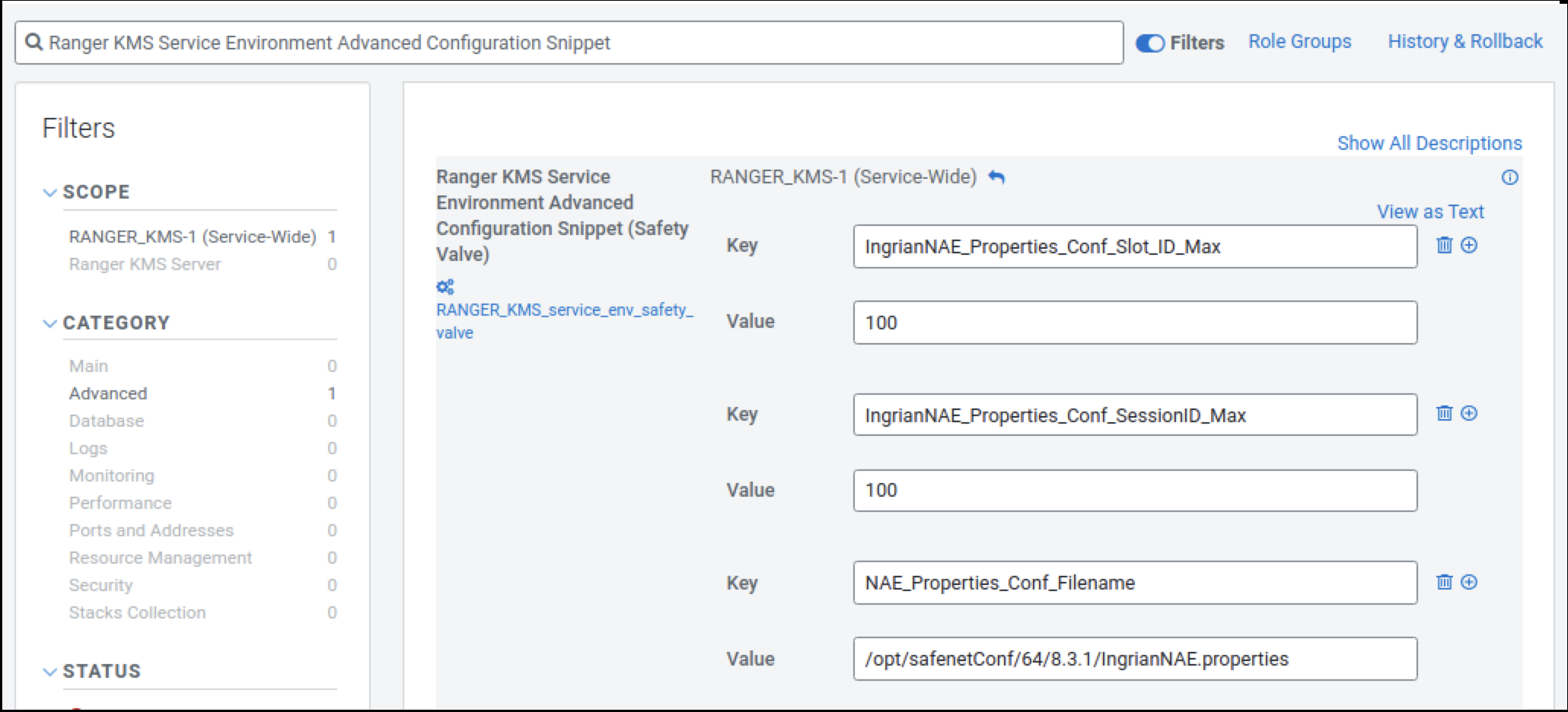Integrating Ranger KMS DB with SafeNet Keysecure HSM
How to integrate Ranger KMS DB with SafeNet Keysecure HSM.
This task describes how to integrate Ranger KMS DB with Safenet Keysecure Hardware Security Module (HSM). This process includes setting up the SafeNet KeySecure Management Console , and configuring Ranger KMS to communicate with the Keysecure instance.
Creating the user on SafeNet keysecure
Login to keysecure with the user having admin privileges.
- Click on the Security tab.
- Go to the Users & Groups section.
- Click on Local Authentication, and click on Add to add a new user.
- Check both ‘User Administration Permission’ and ‘Change Password Permission’ when adding the new user.
- Save changes.

Creating device on SafeNet KeySecure
- Login to Keysecure with user having admin privilges.
- Go to protocol.
- Click on
- Select the Allow Key and Policy Configuration Operations and Allow Key Export boxes.
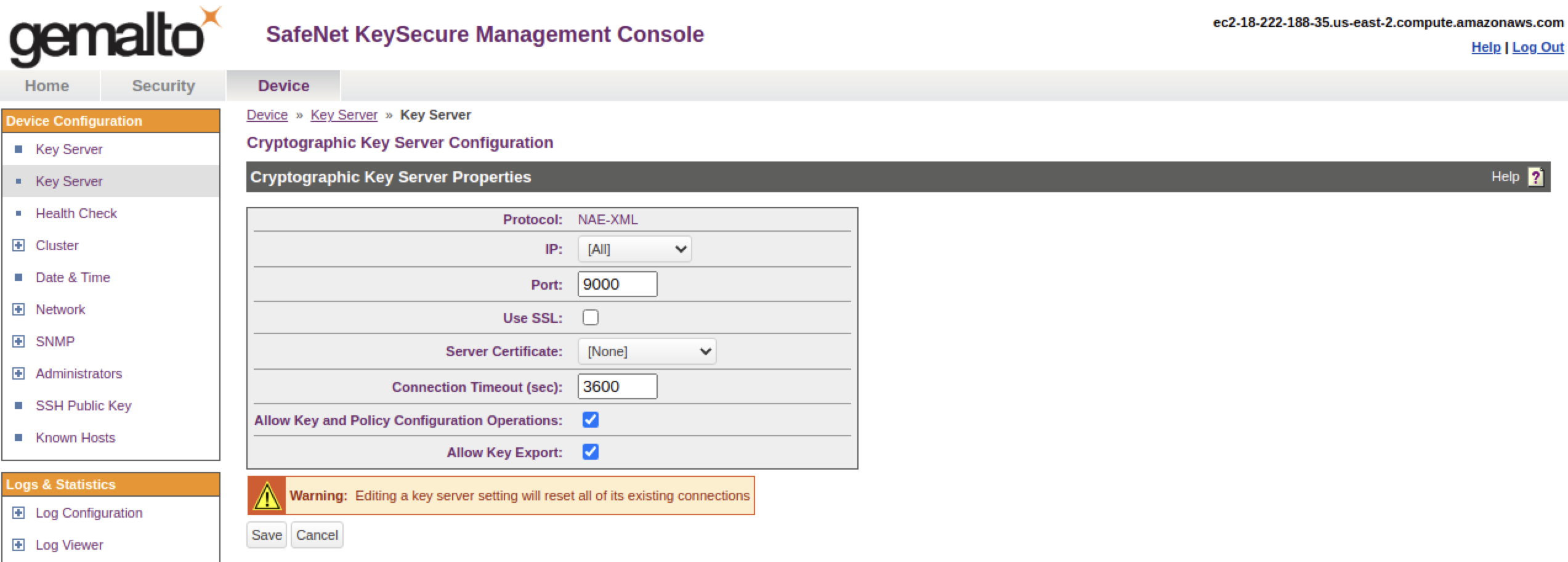
- Save changes.
Configure SSL on Safenet Keysecure (NAE-XML)
Creating a local CA
- Log in to the Management Console as an administrator with certificate uuthorities access control.
- Navigate to the Security, CAs & SSL Certificates section and click on Local CA's.
- Enter the required details and select Self-signed Root CA as the Certificate
Authority Type.
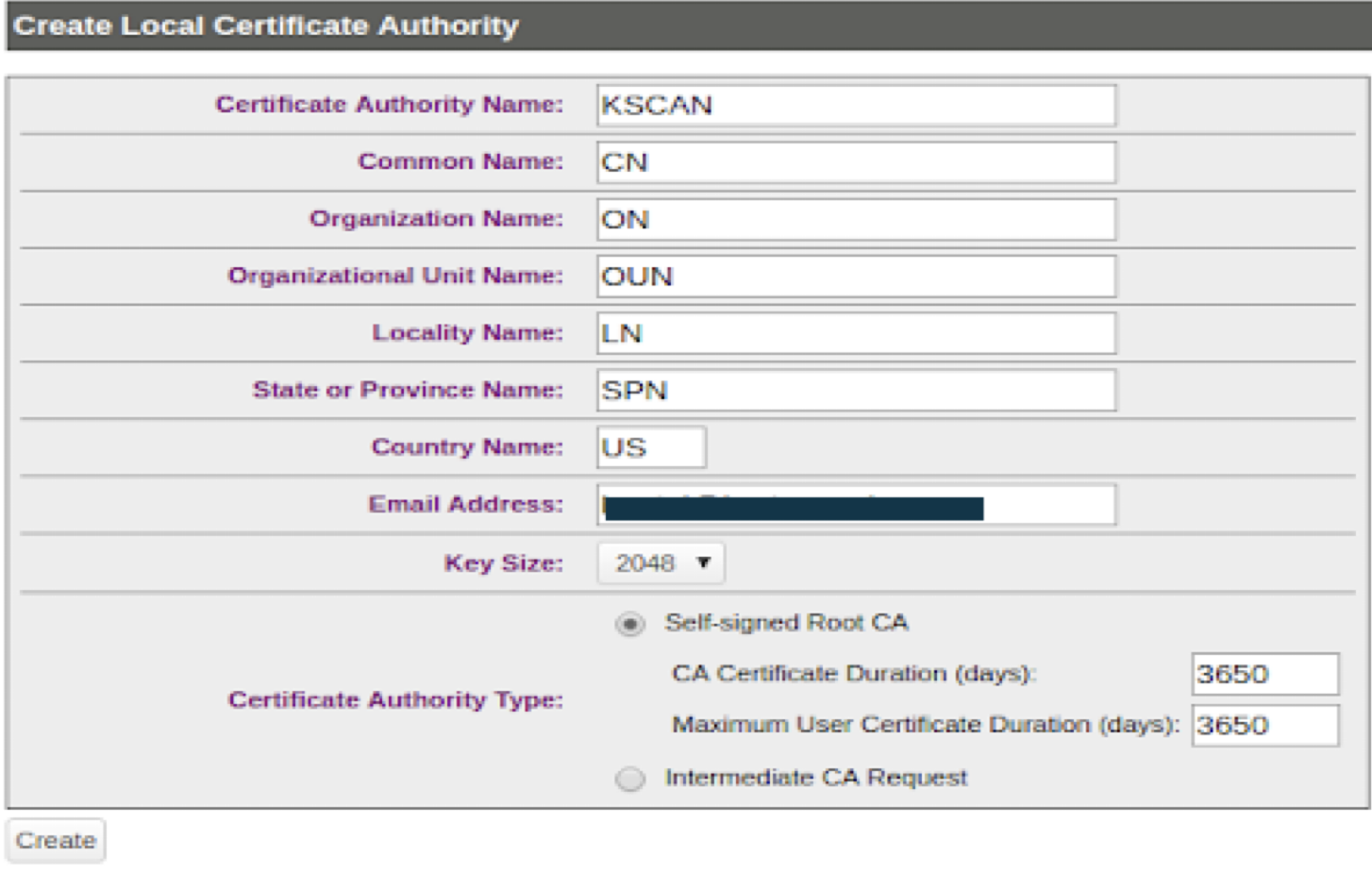
- Click on Create.
The Local CA is visble.

Creating a Server Certificate Request on the Management Console
- Log on to the Management Console as an administrator with Certificates access control.
- Click on the Security tab and on the left side panel .
- Navigate to the Device CAs & SSL Certificates section.
- Click on SSL certificates link and modify the fields as needed.
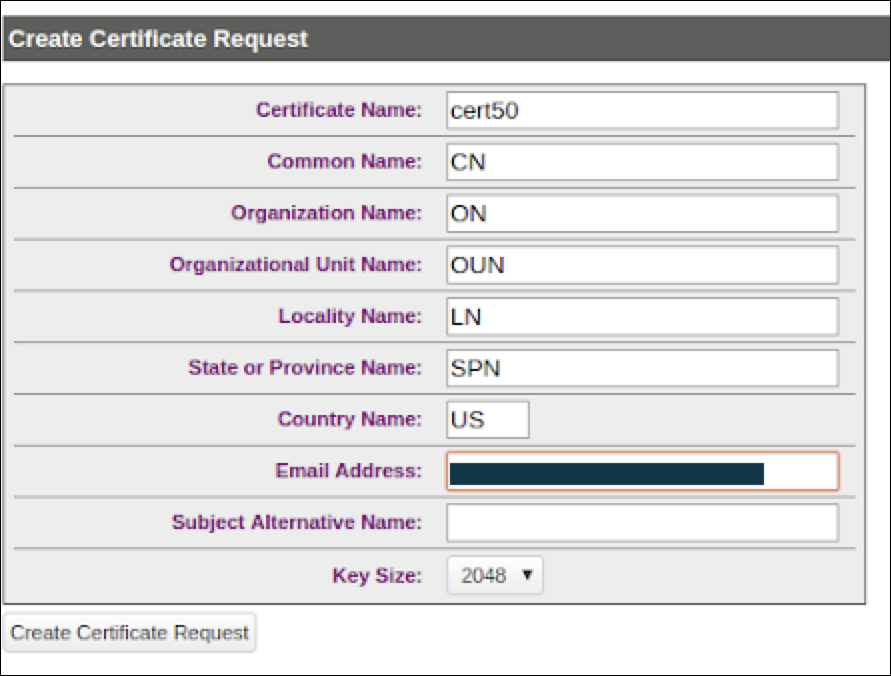
- Click Create Certificate Request.
This creates the certificate request and places it in the Certificate List section of the Certificate and CA Configuration page. The new entry shows that the Certificate Purpose is Certificate Request and that the Certificate Status is Request Pending.

Signing a Server Certificate Request with a Local CA
- Log on to the Management Console as an Administrator with Certificates and Certificate Authorities access controls.
- Navigate to the Security Tab -> Device, CAs and SSL Certificates section.
- Click on the SSL Certificates link.
- Select the certificate request (cert50) and click Properties.

- Copy the text of the certificate request. The copied text must include the header (-----BEGIN CERTIFICATE REQUEST-----) and footer (-----END CERTIFICATE REQUEST-----).
- Navigate to the Security Tab -> Device, CAs & SSL Certificates section.
- Click on the Local CAs link and select the CA name from the given list.
- Click Sign Request to access the Sign Certificate Request
section.

- On the Sign Certificate Request screen, select Server as certificate Purpose.
- Enter the life-span of the certificate for Certificate Duration (days).
- Paste all text copied from the server certificate request, including the
header and footer in Certificate Request.
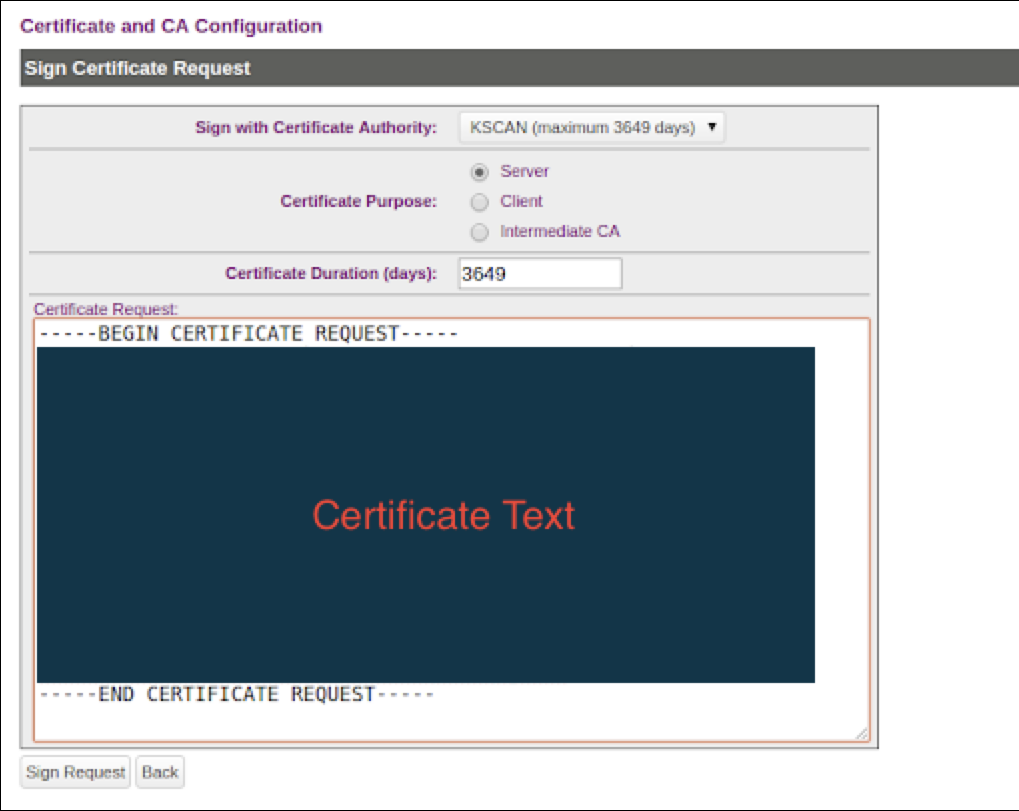
- Click Sign Request. This will take you to the CA Certificate Information section.
- Copy the actual (e.g KSCAN) certificate text. The copied text must include the header (-----BEGIN CERTIFICATE-----) and footer (-----END CERTIFICATE-----).
- Navigate back to the Certificate List section (Device, CAs & SSL Certificates )and click on SSL Certificates.
- Select your certificate request and click on properties.
- Click Install Certificate.
- Paste the actual certificate in the Certificate Response.
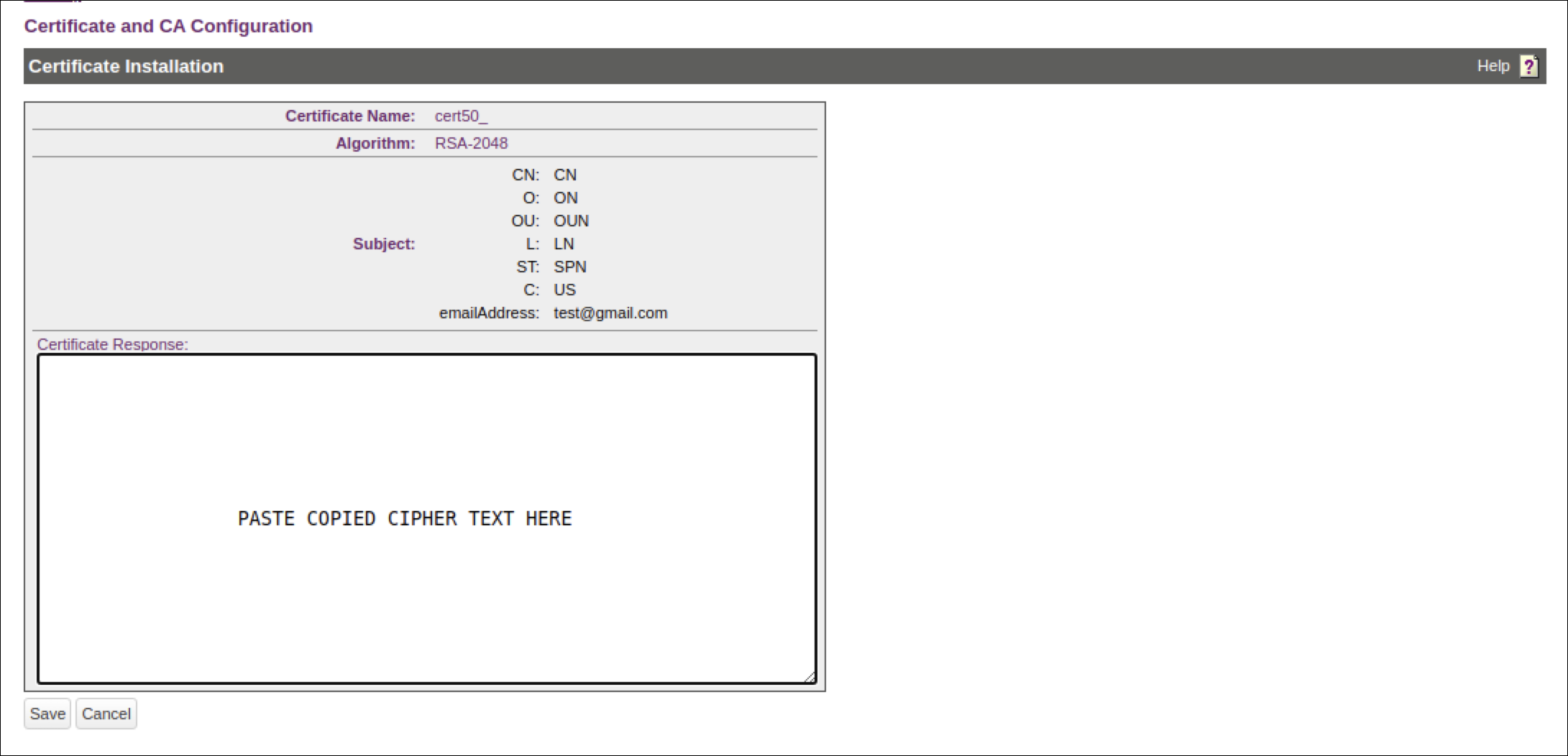
- Click Save.
The Management Console returns you to the Certificate List section. The section will now show that the Certificate Purpose is Server and that the Certificate Status is Active.

Enable SSL on Keysecure (NAE-XML)
Once SSL has been configured in Safenet KeySecure, perform the following steps.
- Log in to keysecure with admin privileges.
- Go to Device tab -> Select NAE-XML protocol -> click on properties -> click on
edit.

- Check Use SSL.
- Select the Server Certificate from the given dropdown (e.g. cert50).
- Save changes.
Fresh Installation Of Ranger KMS with SafeNet KeySecure (NAE-XML)
These are the steps required to configure Ranger KMS DB to interact with Safenet KeySecure HSM. These steps need to be performed only when the cluster is ready with all the required services and no encryption zone keys are created.
Migrating the master key from Ranger KMS DB to KeySecure
How to migrate the Ranger KMS DB Master Key to SafeNet KeySecure HSM. These steps need to be performed when the cluster is ready with all the required services and encryption zone keys are present in the Ranger KMS DB.
Migrating the Master Key from KeySecure HSM to Ranger KMS DB
How to migrate the Master key from KeySecure HSM to Ranger KMS DB. These steps need to be performed when the cluster is ready with all the required services and encryption zone keys are present in the Ranger KMS DB.

